10 Best Smart Document Management Software | Boost Efficiency

A digital-first business world today requires organizations to create and manage tremendous volumes of documents daily. The management of the files that may be related to the contracts and invoices or reports, and presentations has become a core to the success of the operations. Management software has become a very important solution that aids companies in managing, storing, securing, and retrieving their digital documents without any hassles.
These days, with the right management software, organisations can change the way they manage information, less inherent waste searching for files, better collaboration, and ensure that they are playing by the rules in their industry. There are quite a number of choices in the market, so choosing the appropriate remedy needs one to be knowledgeable about their needs and consider the factors that will have the most significant impact on their work.
This is because in this souped-up guide, you will read about the top 10 document management software solutions of the year 2025, and with this information, it will assist you in coming up with an informed decision that fits well into your company’s needs and within your budget.
What is Document Management Software?
Management software refers to a computerized application that is used to capture content, either electronic documents orfilese and stores, organizes, and manages the content within an organization. Those have made centralized repositories where the users can upload, categorize, search, and retrieve documents easily without presenting any version control or security measures.
Unlike the storage of merely files, modern management software may include such advanced features as automated workflows, digital signatures, optical character recognition (OCR), and integration with other applications of business applications. Such systems allow companies to digitize the paperwork, minimize the need to store the documents physically, and procure databases that may be searched.
Why Your Business Needs a Document Management System
- Enhanced Security and Compliance: Document management software contains powerful security features such as access controls, activity controls, and encryption to guard delicate data and ensure regulatory compliance.
- Improved Productivity and Efficiency: Powerful search features enable employees to search and access documents in a shorter time, save time that would be wasted running around with a manual file search, and enhance general productivity.
- Better Collaboration and Version Control: This allows teams to edit documents in real-time, whilst having a version history so that no one ends up using outdated information, and there is no confusion as to which version of a document to use. Industries like construction benefit from integrated solutions combining document management with subcontractor software for seamless project coordination.
- Cost Reduction and Space Savings: Digitization of documents, as well as files, saves space on storing documents, printing expenses, and administrative overheads due to manual handling.
- Disaster Recovery and Business Continuity: Management software on the cloud synchronizes documents so that they are available even when the system breaks down or in the case of fire or earthquakes, etc. Businesses remain operational.
Key Features to Look for in the Best Document Management Software
- Advanced Search and Indexing Capabilities: To enable search specifically in document collections of significant size, the software must present full-text search, tagging of metadata, and intelligent indexing that would ensure that a user can rapidly locate a needed document within a large repository.
- Robust Security and Access Controls: Make sure to find such features as role-based permissions, encryption, digital signatures, and tools to reach compliance with (safely store) sensitive data and bring your business into compliance.
- Seamless Integration and API Support: The best management software must be integrated within existing business systems, such as CRM, ERP, and productivity suites, to form a cohesive workflow.
- Workflow Automation and Approval Processes: Document-centric business processes, involving automated routing, approval workflows, and notification systems, are more efficient than document-centric processes that require a lot of manual handling.
- Mobile Access and Cloud Capabilities: The modern solution ought to ensure that there are mobile programs and cloud-based access so that users can work with documents anywhere on any device.
Top 10 Best Document Management Software 2025
1. DocuWare
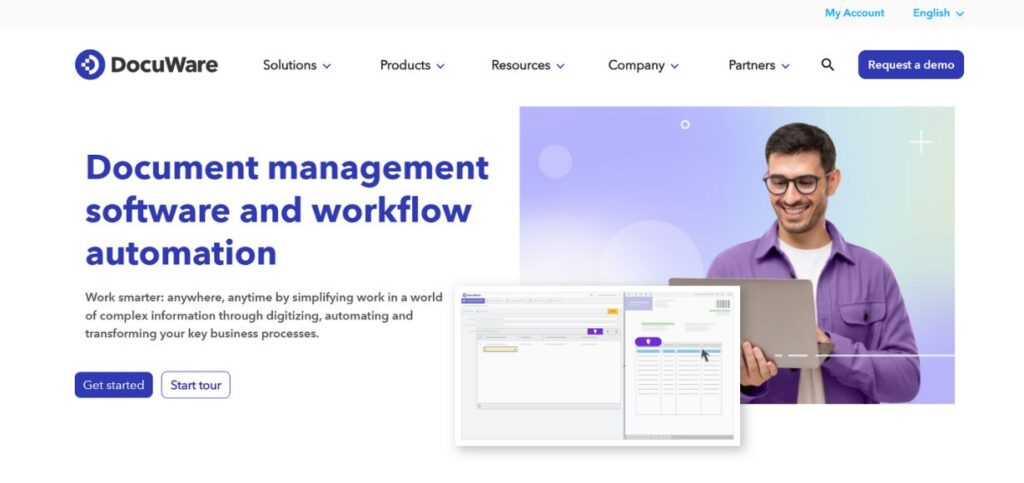
DocuWare is one of the wealthiest management software firms in the market today, and it can be used to apply both cloud solutions as well as on-premises solutions. The software is a German platform and quite excellent at converting paper-based processes to those with an automated workflow to streamline business routines. The good part about DocuWare is that it is not rigid about complicated document workflow and has simple user interfaces that do not need much training.
Key Features:
- Smart document catch
- Automatic management of workflow
- High OCR technology
- Access to documents on the move
- End-to-end security controls
Best for: Medium to large enterprises requiring comprehensive document workflow automation
Pricing: Starting at $10 per user per month for the cloud version
Website: http://docuware.com
2. M-Files
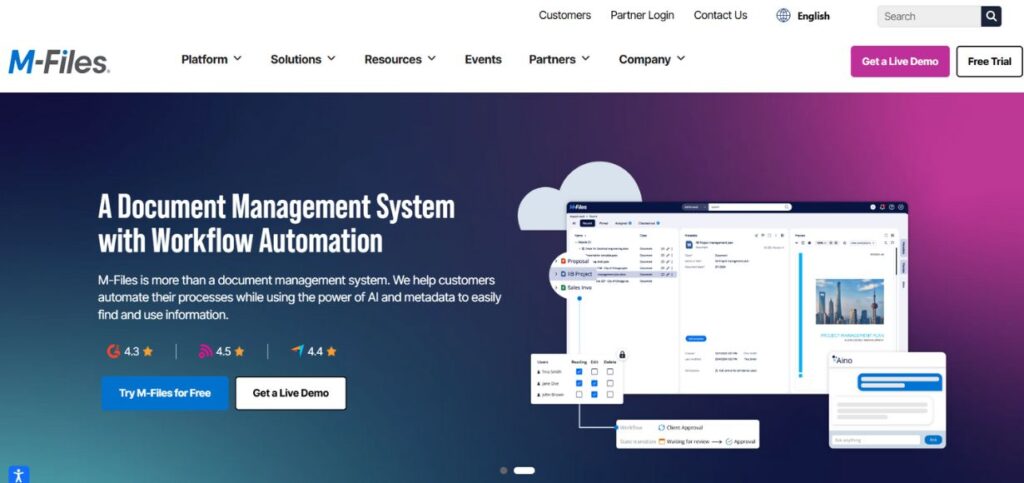
M-Files management software is innovative and alters the previous management software essence, where the document is sorted by the place it is stored rather than by its content. It is a metadata-driven application that provides a unique user experience that resembles the widely used varieties of file explorer applications, but has superior search and classification capabilities. Artificial intelligence and machine learning are used in the automation of the classification of documents to employ fewer manual efforts and increase their accuracy. The M-Files eliminates the need to purchase new applications as it is compatible with other existing business solutions and is made into one information management ecosystem.
Key Features:
- Historical organization of documents by metadata
- Automatic classification based on AI
- Smooth third-party connections
- High-power version control
- Planning software, Real-time collaboration tools
Best for: Organizations seeking intelligent document classification and metadata management
Pricing: Contact for custom pricing based on requirements
Website: http://m-files.com
3. Microsoft SharePoint
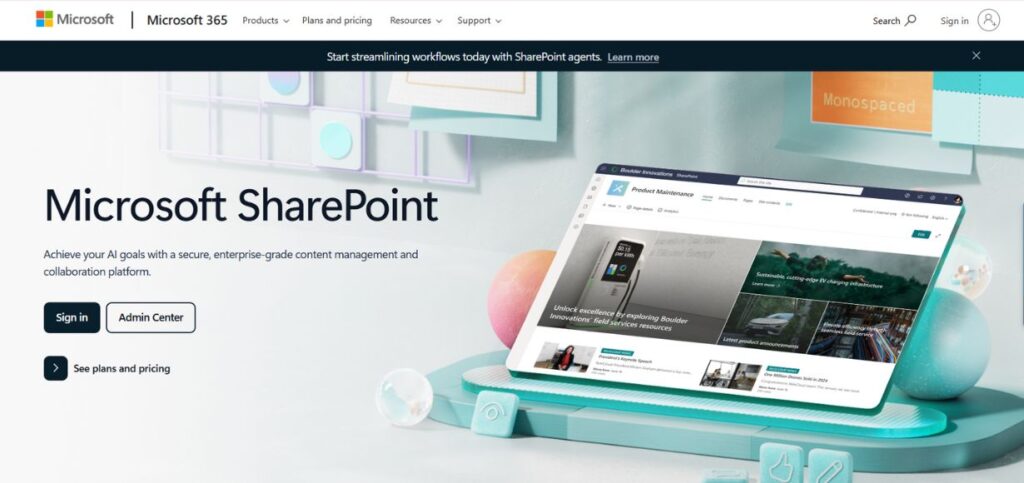
Nowadays, one of the most widespread programs in the world in terms of management software is Microsoft SharePoint, which also has the advantage of being deeply integrated with the Microsoft Office system. The platform is highly applicable in collaborative document management, where people can create, share, and edit documents simultaneously and control the versioning and security aspects. The benefit of SharePoint is that it possesses the familiar interface to Microsoft Office users, and it can be utilized in the creation of custom-made workflows and business applications.
Key Features:
- Native Office integrations
- Cooperative editing of documents
- Automation of workflow, which is customizable
- Solid search options
- Fluid deployment choices
Best for: Organizations heavily invested in the Microsoft Office ecosystem
Pricing: Starting at $5 per user per month as part of Microsoft 365
Website: http://microsoft.com/sharepoint
4. Dropbox Business
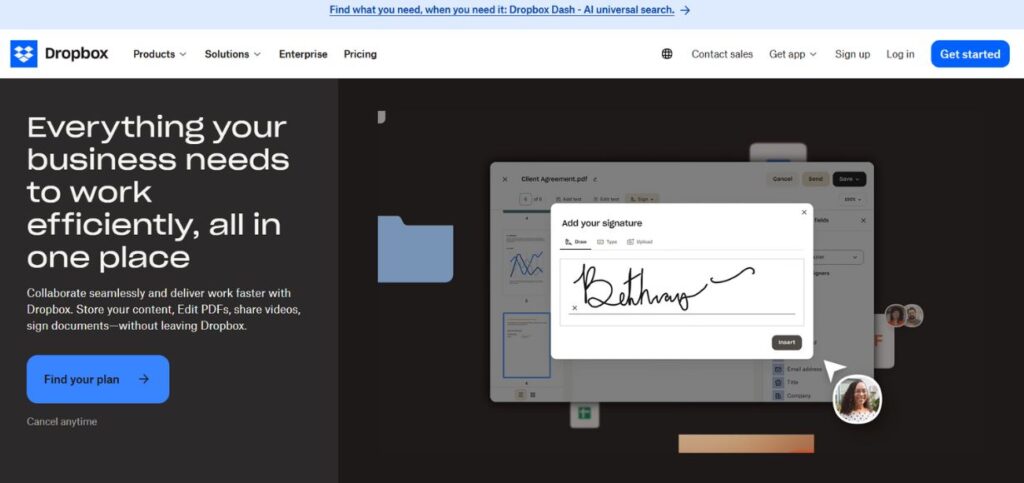
The Dropbox Business application has gone beyond being a typical file synchronization program to become a document management software system with the aim of being user-friendly and supporting team collaboration. The platform is best at delivering an intuitive file sharing and device agnostic synchronization coupled with a smart sync feature that lets users access files without their local storage, such as files being accessed on their computers, but not taking space directly on the computer.
Dropbox Business works with a wide range of third-party applications, resulting in an all-encompassing productivity ecosystem. Its commenting and review allow teamwork, and version history enables its users to retrieve earlier versions of documents should the need arise.
Key Features:
- Seamless file synchronization
- Advanced sharing controls
- Smart sync technology
- Third-party app integrations
- Mobile-optimized experience
Best for: Teams prioritizing simplicity and seamless file synchronization
Pricing: Starting at $15 per user per month
Website: http://dropbox.com/business
5. Google Drive for Business
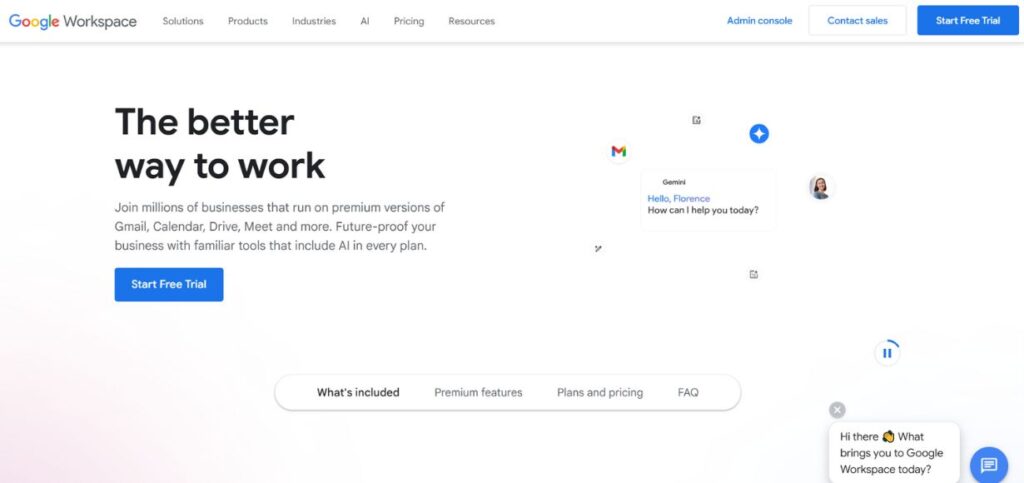
Google Drive is a component of Google Workspace, a cloud-native management software package that focuses on real-time collaboration and accessibility. The fact that its platform connects with the Google productivity suite (Docs, Sheets, Slides) provides an efficient process for the creation, editing, and organization of documents. The advantage of Google Drive is collaboration, which is provided as multiple users can work on a document at the same time, and it can also be commented and edited in real time. The software gives high allocation limits of storage and can be expanded with growth of the organization grows.
Key Features:
- Real-time collaborative editing
- Powerful Google search
- Generous storage allocations
- Native Google Workspace
- Cross-platform accessibility
Best for: Organizations seeking cloud-native collaboration with Google Workspace integration
Pricing: Starting at $6 per user per month
Website: http://workspace.google.com
6. Laserfiche
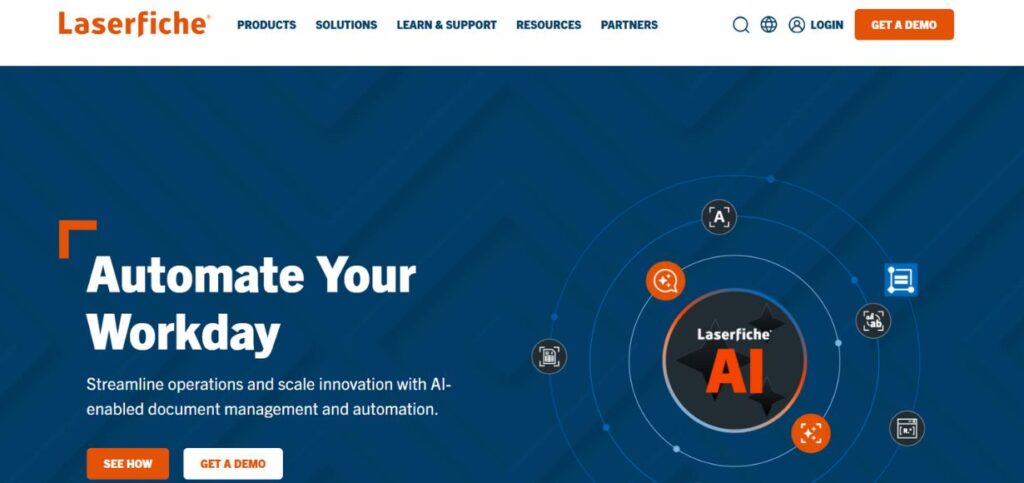
Laserfiche self-identifies as an enterprise-class management software application specializing specifically in the areas of process automation and records management. The platform is very strong in the management of complex document workflow and business processes, and it has been an application applied by government agencies and highly regulated industries. The forms and workflow features of Laserfiche enable organisations to go paperless and fully automate the process. Records management on the software is able to bring forth the requirement of keeping retention policies and regulatory requirements.
Key Features:
- Advanced process automation
- Comprehensive records management
- Intelligent document capture
- Custom forms creation
- Detailed analytics reporting
Best for: Government agencies and heavily regulated industries requiring comprehensive records management
Pricing: Contact for enterprise pricing
Website: http://laserfiche.com
7. Zoho Docs
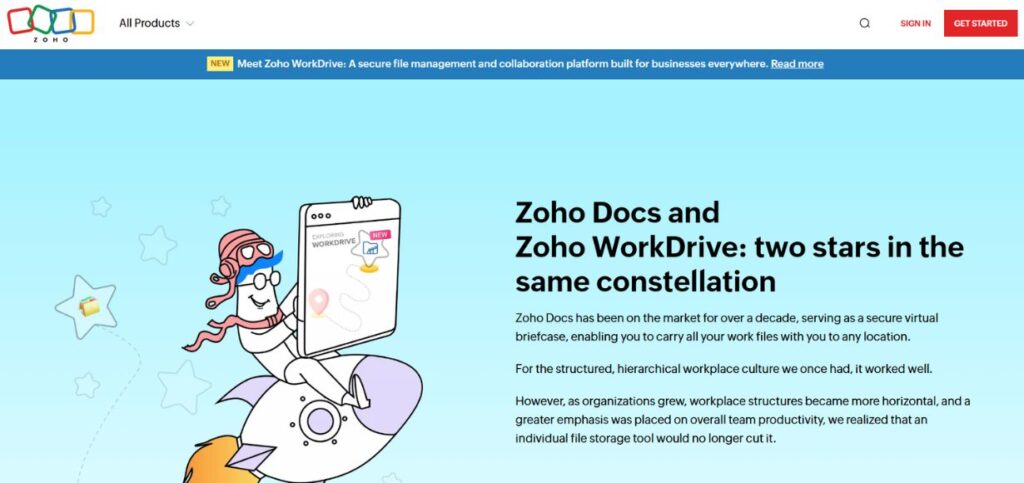
Zoho Docs offers a low-cost/entry and organic integration of document management software with the rest of the Zoho business suite. The system provides the whole document lifecycle management based on its creation place to archival, with specific features in collaborative editing and review functions. Zoho Docs has been supporting numerous file types and version control, which monitors the changes in the document and enables rollback in case it is required. The integration of the software with other Zoho products brings an integrated business environment whereby documents move easily through CRM and project management systems and across other business processes.
Key Features:
- Zoho Suite integration
- Multi-format file support
- Collaborative editing tools
- Offline document access
- Affordable pricing model
Best for: Small to medium businesses using Zoho’s business suite
Pricing: Starting at $5 per user per month
Website: https://www.zoho.com/docs/movetoworkdrive.html
8. FileHold
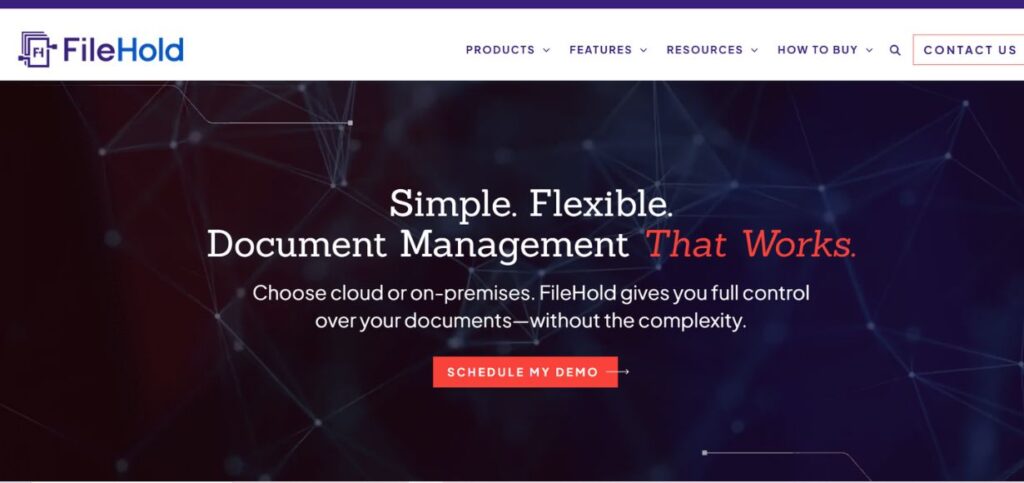
FileHold focuses on being a document management program, specifically tailored to the organization desiring high security and compliance requirements, without sacrificing functionality. Organizations have full flexibility with regard to document protection since the platform also provides cloud and on-premises deployment capabilities. Within the library services module of Filehold, more sophisticated cataloging and classification facilities may be employed and used to sort an extensive amount of documents. The application has detailed audit trails that monitor all document activities needed in the regulated industries.
Key Features:
- Library services module
- Comprehensive audit trails
- Flexible deployment options
- Advanced search capabilities
- Workflow automation tools
Best for: Organizations requiring strong security and compliance features
Pricing: Starting at $15 per user per month
Website: http://filehold.com
9. Evernote Business
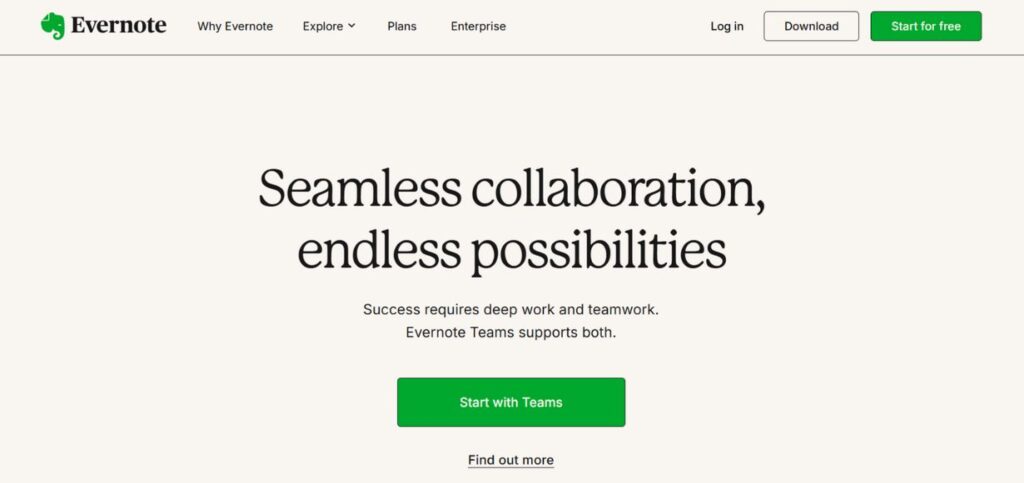
Evernote Business turns the popular note-making application into a strong management software technology that can assist in the management of knowledge and document organization. The system performs best to manage unstructured information and, as such, suits the needs of research-intensive organizations and creative teams. The web clipper in the Evernote software enables the user to capture web information in their document bank, and the optical character recognition permits search of handwritten text the handwritten notes, and images. Its notebook organization system in the software is very flexible in terms of providing many choices on how one can categorize the work in the notebook, since it applies to various work styles and organizational requirements.
Key Features:
- Web content capture
- OCR text recognition
- Flexible notebook organization
- Cross-platform synchronization
- Knowledge management tools
Best for: Knowledge workers and creative teams requiring flexible document capture and organization
Pricing: Starting at $14.99 per user per month
Website: http://evernote.com/business
10. OpenText Content Suite
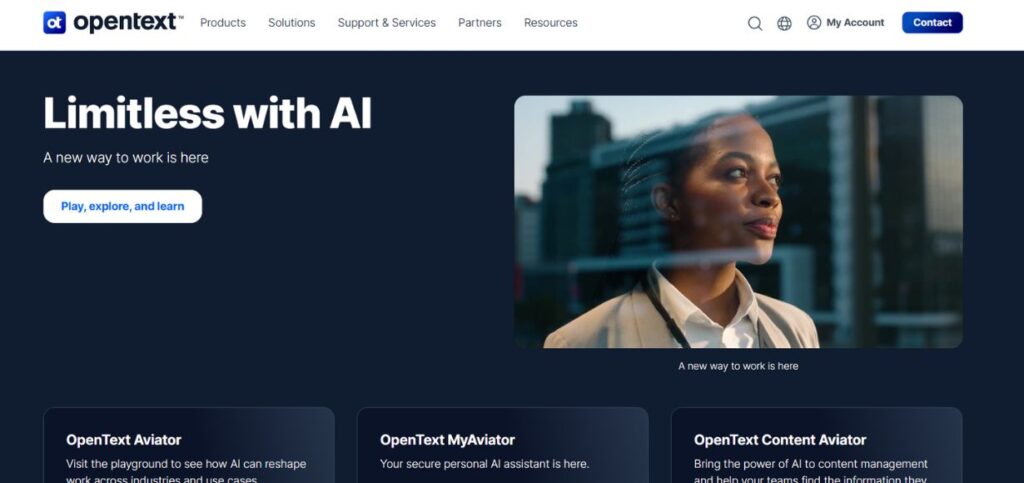
OpenText Content Suite is an enterprise-level document management system product delivering content management solutions to large organizations that have a need to build a complex content management solution. This platform offers end-to-end information governance functionalities such as records management, legal hold, and compliance automation. OpenText specializes in the management of numerous documents and ensuring performance management, and offering advanced statistics.
The AI-related features of the software can be used to automate this process of classifying the content and deriving insights from the collections of documents. The possibilities of its integration are wide because it is possible to connect to virtually any business application using APIs and connectors.
Key Features:
- Enterprise-level document processing
- Content analytics using AI
- Inclusive compliance instruments
- Wide integration ability
- High security solutions
Best for: Large enterprises with complex content management and compliance requirements
Pricing: Contact for enterprise pricing
Website: https://opentext.com
How to Choose the Right Document Management Software for Your Business
- Assess Your Storage and Scalability Requirements: Examine the number of documents currently in your possession and estimate an increase so that there are no issues in terms of the performance of your management software should the volume of your business rise.
- Consider Integration Capabilities with Existing Systems: Select software that can easily interact with the business application, email, and productivity tools they might have, so that it creates a centralized working environment.
- Evaluate Security and Compliance Features: Ensure that it conforms to the regulatory principles in your sector of performance and that it possesses the needed degree of safety checks through encryption, access, and audit.
- Analyze Total Cost of Ownership: In addition to subscription pricing, the implementation cost, the training cost, and the maintenance cost should also be taken into consideration, since these additional costs should guarantee that the cost of the solution is computed using all the costs.
- Test User Experience and Adoption Potential: The management software you select should be simple to operate and should have an interface that does not require intensive training, which will ensure that they are accepted by most users and implemented successfully in your organization.
Conclusion
Choosing the appropriate document management software is one of the most important steps contemporary companies need to consider to improve efficiency in their operations, collaborate with each other better, and sustain the competitive advantages.
The solutions that have been discussed in this guide have various strengths and abilities, whether it is the completeness of workflow that DocuWare has to offer or the collaboration that Google Drive is capable of providing. In choosing a management software, look at the budget, system requirements of your organization with regard to document volume, document security, system integration requirements, and so An optimal solution should be one that is capable of fitting your business processes but leaving space for expansion and change.
Just remember that management software implementation is not only about technology, but it is a new way of doing business with information. And this is because success is determined by the selection of a platform that your team will adopt and use regularly. Exploit free trials and demos to test functionality and user experience, and then make the final decision.
Frequently Asked Questions
Q1: How does the document management software differ fundamentally in comparison to cloud storage?
Whereas the basic file storage and sharing features of the cloud storage can be applied to some document processes, management software has more advanced functions, such as workflow automation, version control, metadata management, and compliance tools, which will fit the unique business document processes.
Q2: How much does document management software typically cost?
The price of document management software differs greatly depending on features and the number of users, as simple solutions start at $5-10 per user/month until well beyond the base price of more enterprise-like solutions and their feature-rich functionality @ 50+/user/month.
Q3 Do existing business applications have the capability to integrate with any document management software?
In modern management software, most software vendors provide a high degree of integration with APIs, connectors, and out-of-the-box integrations with the more mainstream business software, such as CRM, ERP, and productivity suites.
Q4: Why should one prefer using either cloud-based or on-premise document management software?
Cloud-document management tools present advantages in the form of easier implementation, automatic upgrading, and lower initial investments, whereas on-premise solutions allow an organization with unique demands in terms of compliance to exert more control on the security and customization of the software.
Q5: What is the implementation time of document management software?
Depending on the amount of documents involved, customization requirements, and integration requirements, implementation of management software can take as little as several weeks (for simple, cloud-based software) to dozens of weeks (more complex deployment in an enterprise environment).
